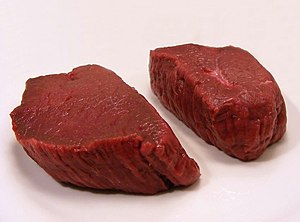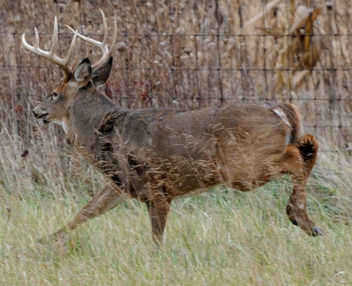October 1 marks the opening day of archery hunting opportunities in Oklahoma.
Most popular and widely available is the deer archery season, which runs throughJan. 15 and offers the Oct. 1.
opportunity to harvest up to six deer. Adventurous archers also have the opportunity to hunt for turkeys, antelope and black bears beginning
"Oklahoma really is a land of opportunity for archery hunters," said Erik Bartholomew, big game biologist for the Oklahoma Department of Wildlife Conservation. "Not only do we have several archery seasons opening Oct. 1, but they each provide ample time and opportunity for diligent hunters to go afield and harvest an animal."
Last year, more than 89,000 hunters took to the outdoors during deer archery season, according to the Game Harvest Survey conducted by the Wildlife Department.
"That's the third highest ever," Bartholomew said.
Bartholomew has advice for archery hunters headed to the field this year.
"Hunters may not find deer in their normal feeding patterns during the early archery season this year because of the increased rainfall we've had in parts of the state," Barthomew said. "There's so many more natural food sources available to deer this year than in recent years when drought had deer concentrating around limited food and water sources. Hunters are going to have to get out there and scout a little more."
Bartholomew also said the increased rainfall has resulted in heavier vegetation, which could also mean visibility could be lower for hunters.
"You may not be able to see deer as well this year as you could in recent years when drought has pretty much dried up much of the vegetation," he said.
Even with the challenges, the rain is welcomed by hunters and biologists, and wildlife is benefiting tremendously.
"Deer will be going into the winter in good shape this year," Bartholomew said.
With plenty of food and vegetation, deer stand a better chance of eating well and preparing for colder months ahead than they do when food is limited.
"I expect we'll have a great deer archery season this year as usual," Bartholomew said.
Deer archery hunters harvested over 23,000 deer during the 2012-13 hunting season, helping reach a total of 107,848 deer harvested last year across all methods.
While deer archery season is open statewide, antelope hunters must hunt in Cimarron Co. and that portion of Texas Co. west of state highway 136. Black bear season is open only in Latimer, LeFlore, McCurtain and Pushmataha counties.
Archery hunters harvested 16 antelope and 66 black bears last season. Antelope populations are down this year from last year. Still, a greater availability of food and water sources should benefit antelope going into the winter while challenging hunters to look beyond limited watering holes and feeding locations that have proven successful in the past.
"The prepared archery hunter will have scouted, talked to several landowners, secured the required written landowner permission they need to hunt, and will be ready for action Oct. 1," Bartholomew said.
Antelope archery season runs Oct. 1-14.
Bear hunters in southeast Oklahoma should be prepared to hunt this year in areas with plenty of natural food sources as well.
According to Jeff Ford, southeast region wildlife biologist for the Wildlife Department, the region has a great mast crop this year, which could lead to good opportunities on public lands as well as private lands.
Ford suggests hunters should not rule out hunting on wildlife management areas simply because baiting is prohibited on those lands. About 25 percent of the total bear harvest last year was reported harvested from public lands.
The upcoming fifth annual black bear archery season will continue to offer ample hunting time and opportunity to sportsmen. Archery season will run Oct. 1-20 with no set quota (a muzzleloader season with a 20-bear quota will start Oct. 26 and run throughNov. 3).
Ford says the structure of the bear season secures better opportunities for hunters compared to the first few years when quotas caused bear season to end in a matter of days or less.
"You'll have at least two full weekends and 20 days to hunt," Ford said. "You won't feel the need to rush out and getting your hunting done the first day."
More time to hunt also allows hunters to be more selective about which bears they harvest, since they won't feel the pressure to harvest a bear before a season quota is reached.
Fall turkey archery season runs Oct. 1 through Jan. 15, 2014, and hunters may harvest one turkey of either sex, statewide. It's common for deer hunters to head to the field with the proper fall turkey license in case they get an opportunity to harvest a turkey while deer hunting.
Seasons on public lands may vary from statewide season dates. Complete details and regulations for each season - including hunter education and apprentice-designated license requirements - can be found in the current "Oklahoma Hunting Guide," available free online or in print anywhere hunting licenses are sold.





















